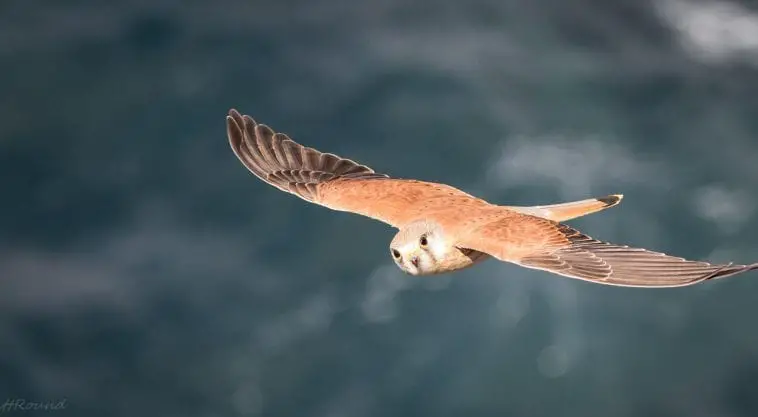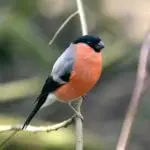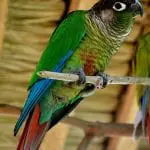Scientific Facts
| Common Name | Galah |
| Scientific Name | Eolophus roseicapilla |
| Lifespan | 25 – 40 Years |
| Size | 13.6 – 14 inches (35 – 36cm) |
| Body Mass | 9.5 – 14oz. (270 – 400grams) |
| Habitat | Savanna, cultivated areas, woodland |
| Range | Mainland Australia |
Information & Physical Appearance
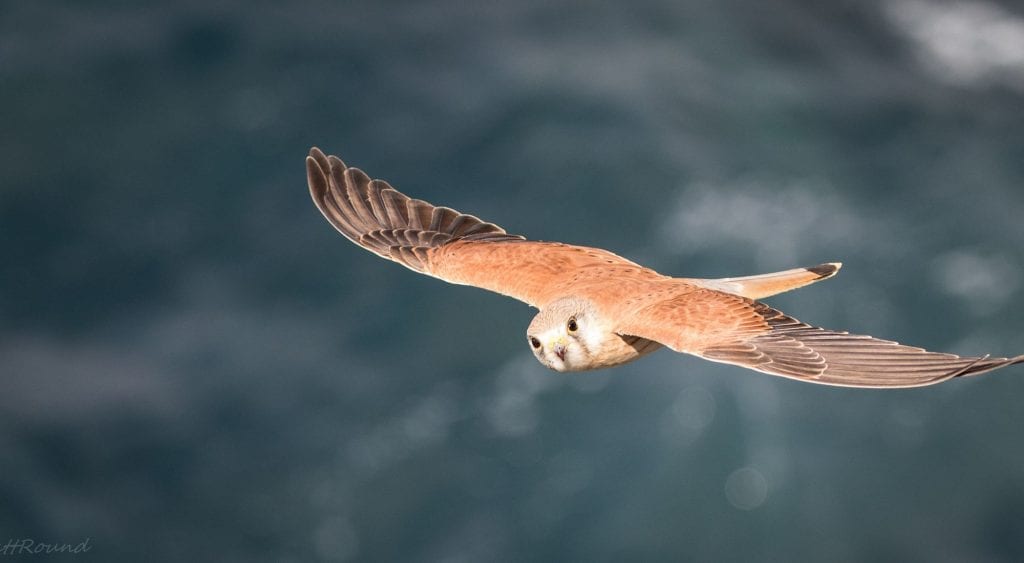
The Galah (Eolophus roseicapilla) is a member of the order Psittaciformes, the family Psittacidae, and the genus Eolophus.
Other common names include Roseate Cockatoo, Rosie, Rose-breasted Cockatoo, Red-breasted Cockatoo, the Pink, and Grey.
There are three subspecies that are usually recognized, including the nominate race.
1. C.r. roseicapilla (nominate race).
Adults of both sexes appear almost identical in physical appearance. However, males’ irises display very dark brown to almost black coloring, while females’ irises display mid-brown to red coloring.
Both adults’ forehead, crown, and crest are colored in soft pink. Also, there is a whitewash that gradually blends into the darker-colored hindneck.
The color of the face is deep pink, and so are the underparts and the neck.
The wings are grey. The undertail coverts are grey, too.
The beak is bone-colored. The rump is a pale grey. There is a white/grey eye ring.
2. C.r. albiceps(the south-eastern form).
Albiceps adults’ forehead, crown, and crest are colored in white, instead of in soft pink as seen in the nominate race.
In addition to that, they are paler-bodied as compared with the members of the roseicapilla race.
Another difference is that in albiceps, the eye ring displays pink to dull red coloring.
3. C.r. kuhli (the northern form).
Note that the valid status of this subspecies is still uncertain.
Both adults are quite similar to albiceps adults, yet generally duller in color.
The crest peaking on the forecrown is shorter.
Overall, they are slightly smaller in size, and there is clearly visible white bordering on the feathers located just below the eyes.
Juvenile
Juveniles’ plumage is duller than that of adults. Furthermore, the crown, breast, and crest are washed with grey.
The eye ring is smooth and white in color. The iris is pale brown.
Lifespan
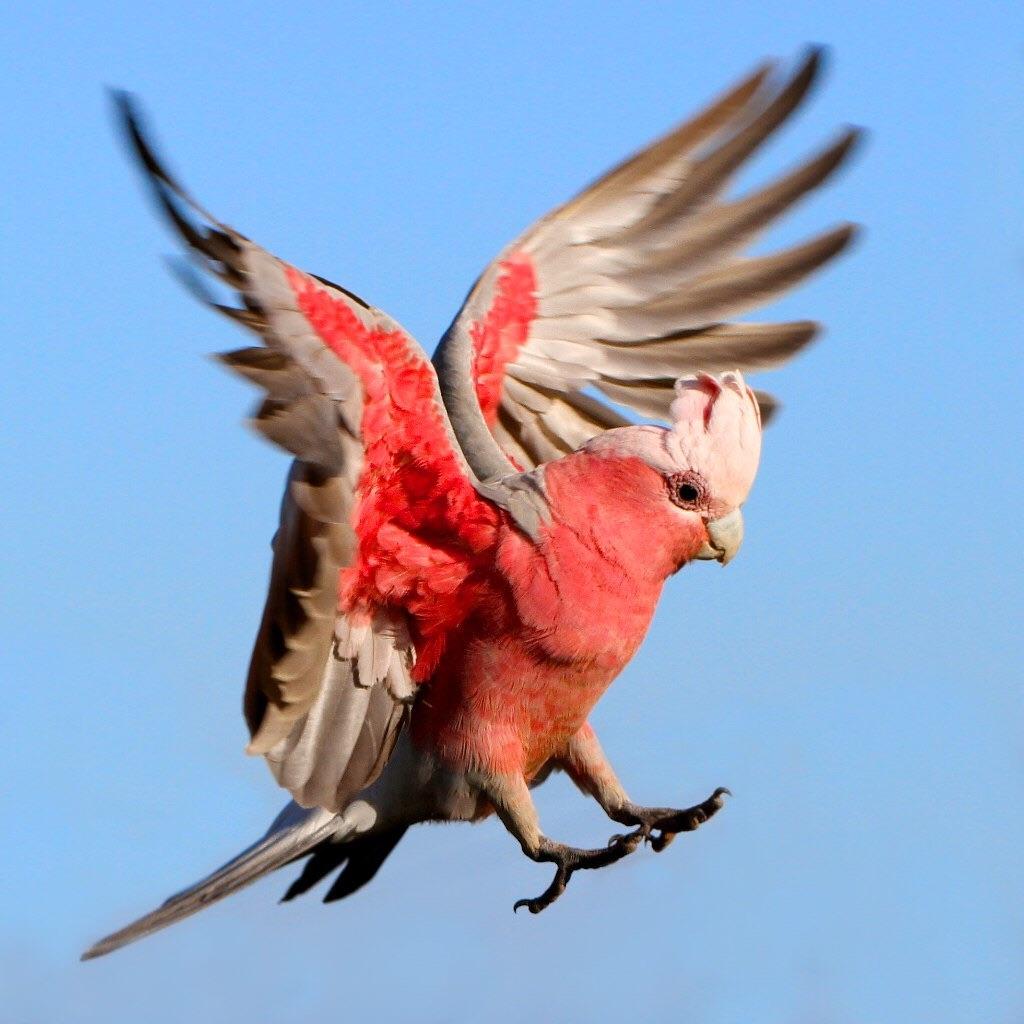
Galahs usually live for between 25 – 40 years on average, as long as proper care is given.
In fact, there are recorded cases of galahs reaching 70 – 80 years of age in captivity when a quality diet is religiously followed, with socialization and interaction provided on a daily basis.
In the wild, galahs rarely live for more than 20 years, though. They commonly fall victim to predators, human persecution, and, nonetheless, traffic.
Ecosystem & Habitat
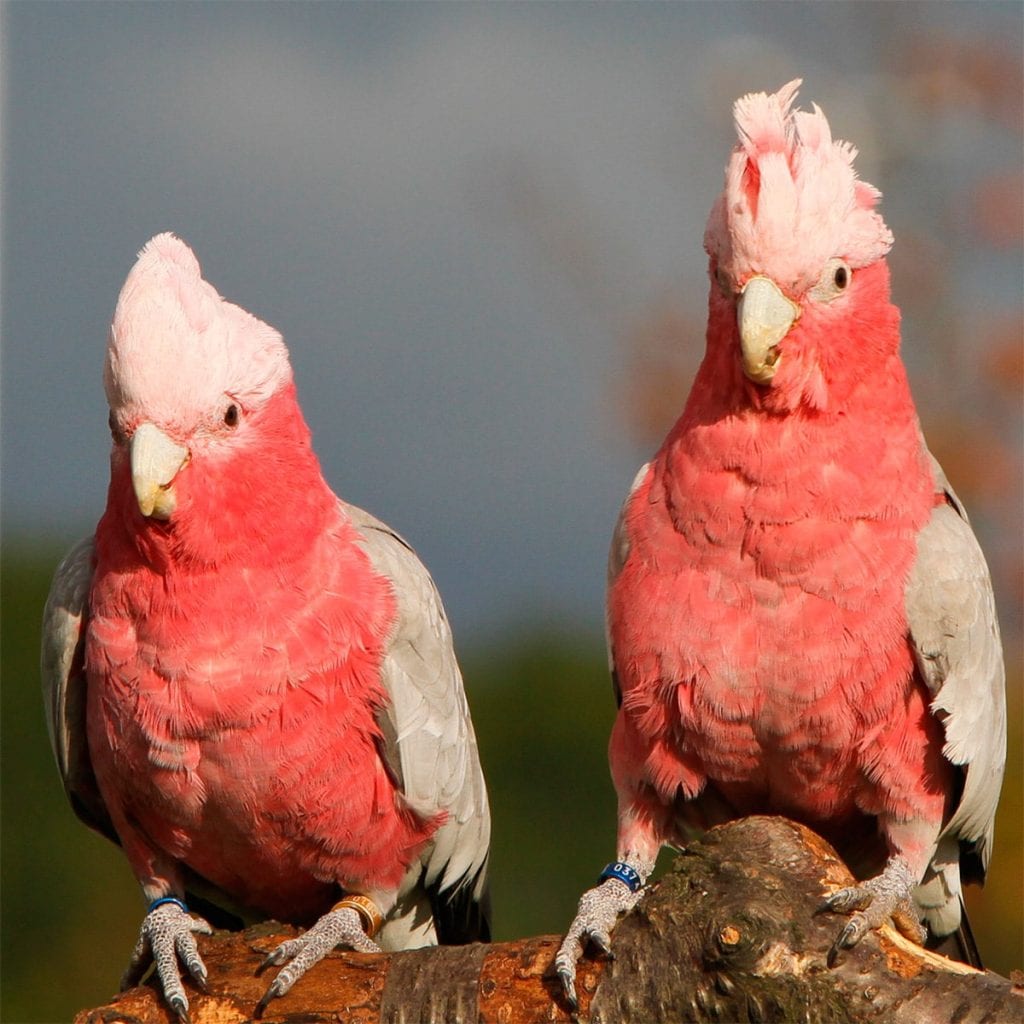
RANGE
Galahs’ range spans across all Australian states. This endemic species is only absent in the far north of the Cape York Peninsula, as well as in the driest areas on the mainland.
Even though there are records of Galahs living in Tasmania that date as early as the 1840s, it remains uncertain whether these birds are native to island, or whether they have been introduced.
Regardless of the uncertainties, galahs are locally common in Tasmania up-to-date, and especially when it comes to urban areas.
In addition to that, galahs are common in metropolitan areas in Australia, e.g., in Melbourne, Perth, and Adelaide.
C.r. roseicapilla’s range spans across western Australia, east to Hart Range and in the south of the Great Sandy Desert.
C.r. albiceps’s range encompasses eastern Tasmania, reaching to the southeastern portion of mainland Australia, to the west of the Simpson Desert.
C.r. kuhli’s range includes northern Australia, southern Cape York Peninsula, the Burdekin River, as well as northern Queensland.
HABITAT
Galahs thrive in a variety of areas. More specifically, they inhabit cultivated areas, savanna, and woodland.
Galahs do not occur in dense forests, though.
They are common to abundant in open habitats, as long as these kinds of habitats offer at least some scattered trees where the birds can find shelter.
Rosies can be found at elevations of up to 5248ft. (1600 meters).
Wild Diet
Galahs’ wild diet primarily consists of a variety of seeds, including but not limited to oats and grass. Eucalyptus seeds are gladly taken, too.
A smaller, yet significant part of their wild diet is made of berries, flowers, buds, and insect larvae.
Behavior
Galahs are foragers that travel up to 9 miles (15km) from their nest site in search of food. Interestingly, post-breeding or non-breeding galahs may go even further.
They can be spotted in large, raucous group gatherings. It is often the case that other cockatoos do also participate in these gatherings (such as Sulphur-crested Cockatoos, among others).
While the group is feeding, one member of the group remains on the watch. If disturbances occur, the entire flock will usually fly off.
Rosie-breasted cockatoos are highly social creatures.
They spend most of their time in one place and are therefore considered sedentary species.
Reproduction
Galahs nest in tree cavities, similar to most Amazona species.
The start of the breeding season varies based on locality. In the north portion of their range, galahs breed from February throughout June. Elsewhere, they tend to breed from July throughout February.
It is most commonly the case that the breeding season begins in August proceeds throughout October.
The clutch consists of 2 – 6 white, ovate eggs, measuring 1.4 x 1 inch.
The incubation period takes around 25 days. It is both the male and the female galah to share incubation responsibilities.
In about 49 days after hatching, the chicks are ready to leave the nest.
Survival Threats & Conservation
Galahs are listed on CITES’ Appendix II, and so they are subject to international trade controls.
Furthermore, Eolophus roseicapillais listed under the Least Concern category on the IUCN Red List of Threatened Species.Even though the number of galahs in the wild remains unknown, the population trend is estimated as increasing based on the results provided by the 2018 global assessment.Do note, though, that there is no systematic monitoring scheme as of 2019. Also, while there are conservation sites identified over the entire range, the species does not occur in any protected areas.
On the bright side, this species has actually benefited from the increase of agriculture in its native range, thanks to the additional food supplies available.
The major survival threats include heavy trapping of these birds for food on the local and national levels, as well as some illegal trading.
The wild bushfires that hit Australia at the end of 2019 have also caused considerable damage to galahs, as well as to other already threatened species, such as the Mallee emu-wren, koalas, western grey parrots, Gilbert’s potoroo, and the Leadbeater’s possum.
Big parts of their habitat have been severely damaged, with especially extensive damaged caused on eucalyptus trees, which make up for a crucial source of food for both koalas and galahs alike, among other species.
The ongoing consequences of climate change will possibly further threaten the survival of galahs and millions of other unique animal and plant species all over the world.
Availability – Where to Get a Galah
Galahs are widely-spread in captivity, which makes up for these beautiful feathery fellows being widely available for sale, as well
You can acquire a galah from various avian-specialty stores, both online and offline.
As with other bird species, one may wish to keep as pets; acquiring your galah directly from a reputable breeder is also a wonderful idea.
It is possible to adopt a galah from a rescue center, too. In fact, there is an option for virtual adoption, which allows you to donate part of your money and/or time to sponsoring a galah in need.
Interesting Facts
1. Rose-breasted cockatoos are highly adaptable. Because of this, galahs seem to have actually benefited from the change in the landscape, which has affected their habitat since European colonization.
In fact, galahs are suggested to be possibly replacing Major Mitchell’s Cockatoo in a certain part of its native range.
2. The very term “galah” is derived from the word “gilaa.” “Gilaa” is used in Yuwaalaraay Aboriginal language, as well as in other neighboring Aboriginal languages.
3. Similarly to other cockatoos, rose-breasted cockatoos are known to create especially strong bonds with their partners. These bonds last for a lifetime. Galahs are strictly monogamous.
4. The media describes the offspring produced by the hybridization of galahs with cockatiels as “galatiels.” Apart from having shown to be capable of hybridizing with cockatiels, galahs are also known to breed with little corellas (Cacatua sanguinea). Littler corellas and galahs often join flocks, too.
5. The term “Galah” also happens to be a derogatory Australian slang word. It is used in the same context as “idiot,” “clown,” and/or “fool.”
Another use is to denote gaudy dress, and this use is associated with the bird’s distinctive bright pink colors.
The standing comedy performer Paul Hogan has also provided quite a comedic, yet detailed description of the Australian slang term “galah.”
Ali Stewart from Home and Away is another popular use of this slang term. If he is riled by somebody, you will commonly hear him saying, “Flaming galah!”
6. In the late 1960s, an Australian representative team of footballers participated in a series of test matches. Australians played against Irish Sides back then, as part of the rest matches of the International rules football. The Australian team of footballers was nicknamed “The Galahs.”
How to Care for the Galah
1. Housing & Enrichment
Even though this is not a large parrot species, the galah does require a spacious enclosure in order to thrive and live up to its fullest potential. A walk-in-aviary will work excellently, as long as it is at least 23ft. (7 meters) in length.
Alternatively, provide a cage that measures at least 4x4x4 feet.
Mind that some caregivers report that rose-breasted cockatoos are usually reassured at night by having their cage covered.Make sure to utilize a variety of chewable, such as sterilized pine cones, bird-safe branches, and, nonetheless, perches of different sizes.
Also, vegetable-tanned leather toys, hanging toys, and bird-safe dried grasses are strongly recommended.
Change toys on a regular basis. Doing so will keep your feathery fellow interested, while also teaching it how to play independently.
Important Notes
Galahs, just like all cockatoos, do enjoy an occasional bath. More importantly, they should be encouraged to bathe on a regular basis. That’s because bathing helps to prevent unwanted feathers and skin diseases.
Not the least, galahs tend to be much happier when sharing an enclosure with another rose-breasted cockatoo friend.
2. Diet
A healthy captive diet for galahs consists of seeds, fruits, and vegetables. Only feed with a limited mixture of seeds, including both sprouted and dry seeds.
Since seeds lack essential minerals and vitamins, galahs daily feeding routine should be further supplemented with small portions of veggies and fruits, such as beans, peas in the pod, apples, carrots, corn, spinach, broccoli, celery, chickweed, kale, Swiss chard, romaine, Chinese cabbage, peppers, zucchini.
You can use walnuts, pecans, and almonds as occasional treats, especially for training purposes.
Do not overfeed your Rosie with high-fat nuts or any other high-fat foods, though.
When rearing young chicks, a healthy diet should include birdie bread, eggs, and fresh corn.
Complete kibble is a must. Freshwater should be available at all times and changed daily.
Always remove seeds from apples and never feed your galah avocado.
3. Speech and Sounds
As a rule of thumb, Rosies tend to be much quieter, as compared with other cockatoos that simply adore being loud, and are renowned for their noisy behavior.
However, galahs do still enjoy mimicking human speech and talking, and they do so in an especially funny, peculiar way.
Mind that galahs may not make the best choice for apartment dwellers, though, due to their possible noisiness.
It is good to know that noisy behaviors are typically limited to early evening and early morning.
4. Personality
Rose-breasted cockatoos are beloved for their affectionate personality. They can create very deep bonds with their caregivers.
Many galah owners admit that by getting to know their feathery fellow better, they meet a new, dedicated, lifelong friend.
Galahs may sometimes act shy but are very outgoing in general. They are full of energy, eager to socialize, and always in the mood for fun, full of silly, goofy behavior that is sure to bring you plenty to smile about.
Unlike other parrots, Rosies can be very quiet in their play. They also like to cuddle and reach up to their owner in search of some pleasurable scratches and petting.
Galahs are considered an exceptionally entertaining company and are guaranteed to provide their owners with a limitless, endless supply of love.They always know how to surprise their owners, whether it comes to learning a new word or applying a new way of getting exactly what they want in their very own, peculiar manner.
Do note, though, that galahs are high-maintenance pets. They require a considerable amount of time engaged in socialization and interaction with their owners.
Galahs perceive their caregivers as members of the flock. In the case you are to neglect, treat poorly, and/or even occasionally ignore your Rosie pet, it may become destructive and depressed.
To remain healthy and happy, you need to allow your Rose-breasted cockatoo to spend at least 3 – 4 hours a day outside its cage.
5. Common Health Conditions
Galahs are extremely adaptable, and nonetheless, very durable birds. It is exactly because of their hardiness and adaptability to why they are so popular and common throughout the entire Australian continent.
Even with the rapid European settlement activity that led some parts to become critically endangered, this was not the case with galahs. They have managed to adapt and thrive, resulting in an increase in their population rather than a decrease.
All of the above beings said rosies have a solid reputation as healthy and hardy pets.
If given enough good care, galahs will barely encounter any serious health troubles during their rather long lifespan of up to 80 years.
Ultimately, galahs are regarded as unusually hardy. They are free of many of the most common diseases and disorders that affect other cockatoos and parrots.
Despite their hardiness, rose-fronted cockatoos may still fall victim to some nutritional disorders and diseases, such as lipomas, feather-picking, fatty liver disease, as well as PBFD (psittacine beak and feather disease).
The most common health problem is none other but obesity. Obesity may be due to a diet that has too many calories and/or lack of physical activity.
As long as you provide your galah with plenty of exercises, interaction, and a balanced diet, your feathery companion, will be one of the healthiest of all parrot species, one can keep as pets.
FAQ Section
What Color Is a Galah?
Galahs’ plumage exhibits beautiful pink and grey colors that range from pale grey on the rump to pink on the chest and on the face, mid-grey to silver on the back, and light pink on the crest, with the extent and nuances of body coloration slightly varying among the three subspecies. The beak is bone-colored, and the legs are grey.
How Can You Tell How Old a Galah Is?
It is not possible to accurately determine the age of a galah at a mere glance; however, you can at least get an idea about how old a galah is by examining its eyes. One way is to take a close look at the white area around the eye, in particular, to count the number of wrinkles, and another way is to count the number of layers on the beak.
How Long Do Pet Galahs Live?
Galahs are known to live for up to 80 years in captivity with proper care, plenty of interaction, a balanced, varied diet, and, nonetheless, exercise. Taking into account the long lifespan of galah pets, potential owners need to carefully consider whether they will be able to commit to owning a rose-breasted cockatoo, and such a big, important decision should not be taken lightly.
Are Galahs Noisy?
One of the reasons why galahs are very popular as pets, apart from their bright coloration and friendly nature, is that they are not as noisy as other cockatoos and parrots. Usually, galahs are the noisiest at dawn and at dusk, and may not be well-suited to apartment dwellers.
Are Galahs Smart?
Yes, Galahs are highly intelligent, naturally smart animals. They are also highly adaptable and social, and their sometimes goofy to absolutely impressive smartness can be greatly stimulated with proper training over time.
Do Galah Cockatoos Talk?
Yes, Galah cockatoos can learn to talk, and these clever birds are especially good at mimicking people’s voices, while also capable of impersonating daily sounds, such as a telephone ringing, an alarm, a horn, and/or a whistle. Do note that female galahs are less gifted at talking than males.
What Should You Not Feed a Galah?
Do not feed galahs with avocado, apple seeds, chocolate, high-sodium foods, high-sugar foods, or artificially sweetened foods. Instead, provide your galah with low-fat seeds, nuts, berries, and fresh, bird-safe fruits and veggies.
Can Galahs Eat Bananas?
Yes, galahs can eat bananas as a part of a healthy, balanced, varied diet, among other bird-safe fruits, such as berries, mangoes, passionfruit, pawpaw, starfruit, apples, oranges, and lychee, among others. Let your Galah pet “tell” you what kinds of fruits it enjoys eating the most, as some types of fruits may not be the most relished food for your feathery fellow.
Do Galahs Eat Meat?
Galahs require additional protein every now and then, and especially during the breeding season. Their wild diet consists mainly of herbs, roots, seeds, green shoots, grasses, berries, and leaf buds, while insects and their larvae make up for a suitable protein source that is taken only sometimes and not on a daily basis.
Why Do Galahs Squawk?
In the wild, galahs squawk or screech because of fear, potentially signalizing danger. In captivity, galahs may squawk because of feeling jealous of the attention another family member or pet receives, but household noise at night (for instance, TV), people moving around the house, and/or unsuitable cage location, in general, can also lead to inadequate sleep which results in squawking/screeching.
Are Galahs Good Pets?
Galahs can make good pets, and in fact, wonderful pets, for potential caregivers who can give their galah proper housing and dedicated care. Galahs are very intelligent, funny, affectionate, and always ready to surprise and entertain you with their goofy tricks.
Are Galahs Cuddly?
Galahs are very affectionate birds to keep as pets, and they are known for forming especially strong bonds with their owners. They are not as cuddly as other cockatoos, such as Umbrella Cockatoos, however, whether your galah will enjoy cuddling or not greatly depends on socialization and interaction, as well as differences in the unique individual preferences of this species.
What Does Galah Mean in Aboriginal?
The word “galah” is derived from the word, “which is used in several Aboriginal languages. Ever since the 1930s, the word “galah” has turned into a slang word in Australian English, referencing an idiot or a fool, and this use is derived from the perceived goofiness of galahs.
Why Do Galahs Hang Upside Down?
One of the theories on why galahs choose to sleep upside down is related to the way these birds roost in the wild in high, well-concealed locations known as communal roosts. This behavior is often noticed in captivity, too, as some galahs may perch as high as feasible in their enclosure, falling asleep as they hang upside down.
Are Galahs Destructive?
Yes, galahs can be extremely destructive and prone to self-harm, as well as depression, in the cause they are not physically and mentally stimulated. Apart from exhibiting destructive behaviors, they may also become especially noisy due to the lack of sufficient mental and physical stimulation.
Do Galahs Fly at Night?
No, galahs do not really fly at night, since this is the time when they congregate in large flocks, roosting together at communal roosts. Renowned for their bouncing, acrobatic flight, galahs usually spend most of the day in the foliage of shrubs and trees, where they find shelter from the high temperatures typical for their native range and habitat.
How Much Is a Galah Cockatoo?
Galah cockatoos are successfully bred in captivity and are especially popular as companion birds. Galahs are not as expensive as other cockatoos or parrots one can keep as pets, and depending on temperament, age, as well as the person selling a galah, you can find one available for sale for about $700 – $2200.
Are Galahs Endangered with Extinction?
Galahs are listed as Least Concern on the IUCN Red List of Threatened Species, and hence, they are not considered critically endangered with extinction. However, the continuous loss of habitat, greatly driven by the consequences of climate change, such as wildfires and droughts, as well as the trapping of these birds for the illegal wild bird trade, do pose serious threats to the future survival of this species.

